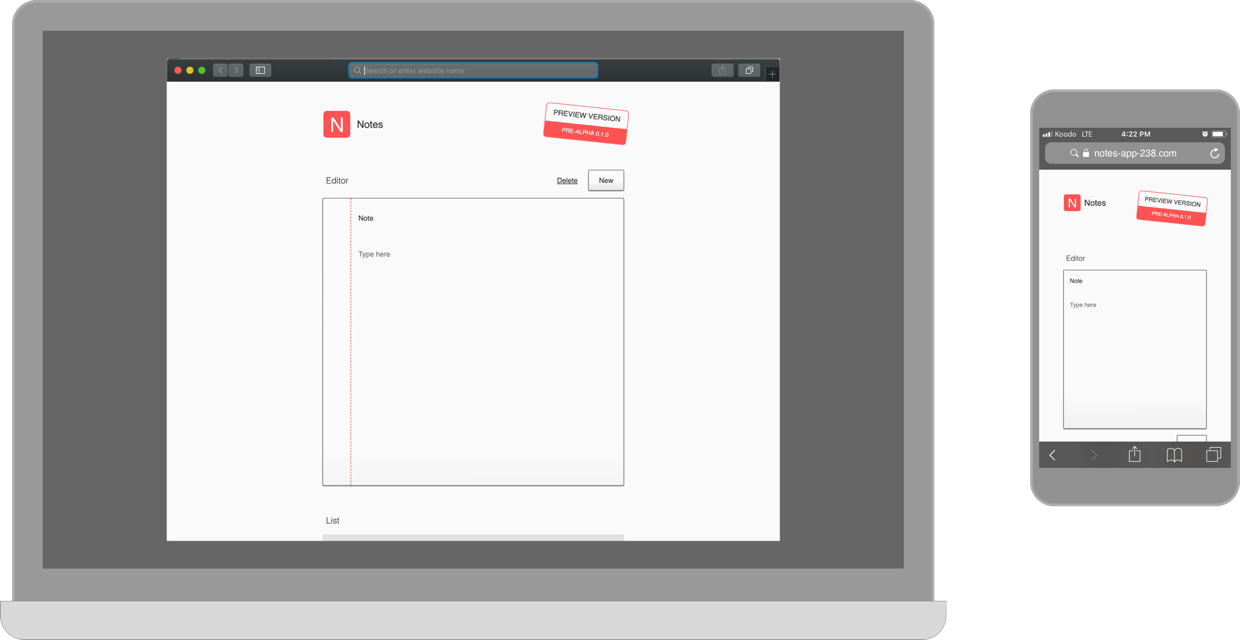The Notes Project

Montreal snowstorm
A snowstorm in April. That is the life in Montreal, sometimes. This weather was the reason my flight was delayed. I was on my way back from Chicago, where I visited my friend Guillaume. I sat in the Toronto airport lounge, with time to think. Before leaving for the city of architecture, the idea of moving on to a personal project had already formed. Except this time, I thought, I would finish this personal project, up to its release in production.
I like sketching. Since I completed my degree in software engineering, many app ideas have populated my sketch books. I took notes whenever I thought of an app or concept to solve a problem with technology. It could be for helping me automate tracking my expenses, remind me when bills are due, or motivate me to follow healthy habits such as drinking water or training flexibility and mobility. My notebooks were full of ideas; however, my attempts to bring them to reality were not conclusive. In many cases, it required a lot of effort and the design wasn’t satisfactory. I continued to try, failing and learning. I accumulated enough experience and lessons to try one more time.

A new journey begins
From Chicago to Montreal, the plan to complete a personal project became clearer. I chose the project of note-taking and categorization. A simple endeavour, I thought. Previous attempts often started with a complex solution from the start. It didn’t work. I wanted to start small in order to complete it. I also wanted to achieve objectives regarding design and programming. For example, here were two objectives for this project:
- Design 🖌🎨
Test interface sketches using a paper prototype before starting code.
Human-computer interaction was a special class for me, where I learned a design process centred around the human. During the course project, we used various testing methods to confirm our hypothesis. One of those methods was using a paper prototype, which I really wanted to revisit and practice. - Programming 👨💻
Build a system architecture using layers and design patterns.
Many projects I’ve worked on already encompassed the structure when I joined the team. Hence, I really wanted to experience creating my own software architecture and test it out.
For each objective, a section was reserved in the project wiki.

Project's Wiki
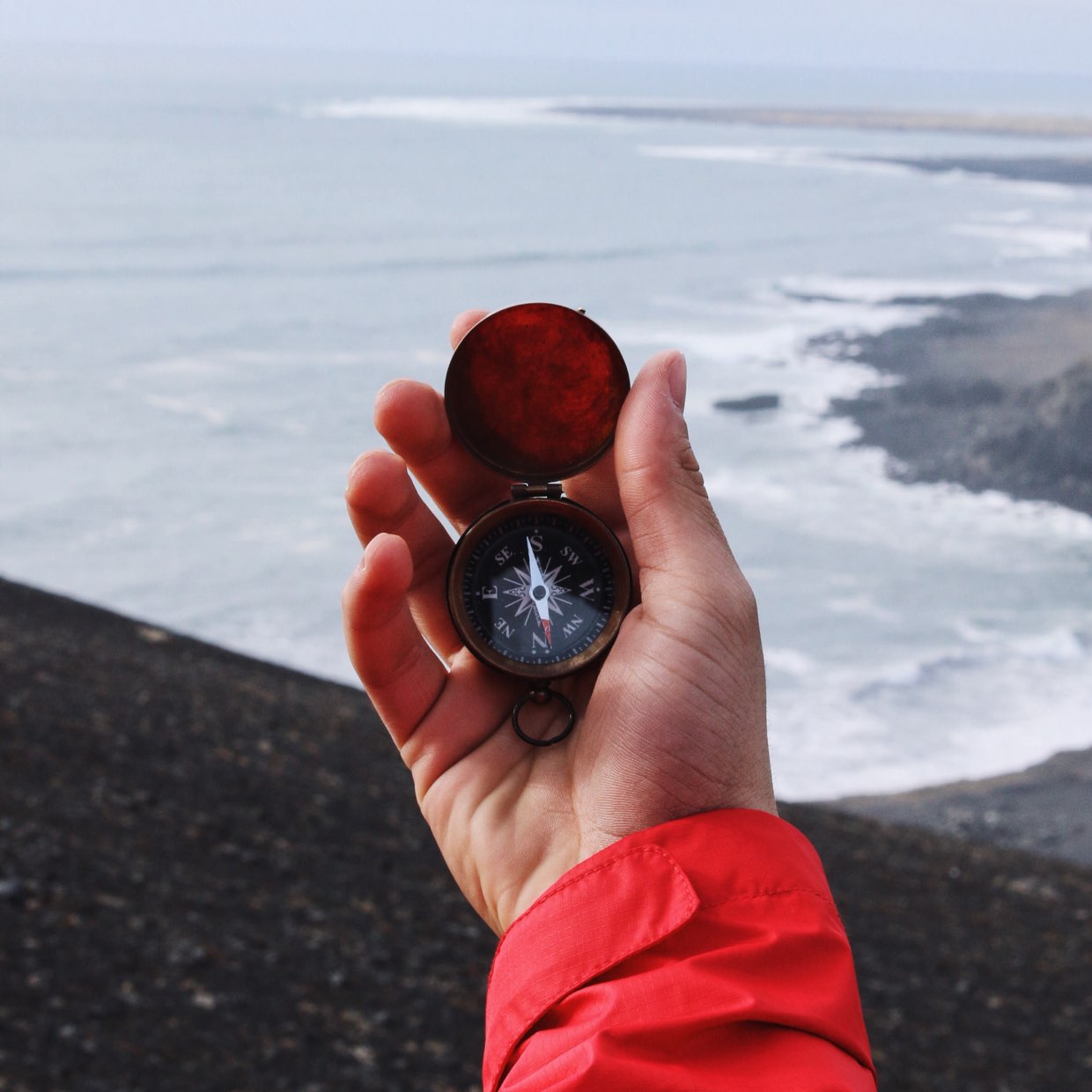
Setting a direction
Objective I: Design
Practice design was my first goal to tackle. My design background had grown a lot in the recent years.
- Human-computer interaction class with its human-centred approach
- Numerous sketches of interfaces for app ideas
- Details in the interaction of apps analyzed during development
- Discussions with user experience and user interface designers about the rationale behind their design decisions
- Talks about the various forms of design at the MTL Design Club
- Online courses about design theory and practice using design tools and graphic design terminology
- Short experience as user interface designer for musical experiences
I learned that design gives a direction for the rest of development. Good design makes use of the common sense to build around usability and simplicity. It looks for a balance between flexibility and constraint to bring its users in flow with the app. Best practices aren’t always appropriate, and the best approach often depends on careful considerations. Good design gets out of the way and becomes invisible. I realized while sitting with professionals and scientists that personal work doesn’t get easier with experience but actually reaches a new level of abstraction. This level opens new discussions to share perspectives on quality and practices, to try on new experiments.

With experience
This note-taking app was my new experiment. I divided a plan with the objective of a simple and elegant design.
- Identify the problem (or opportunity to improve) following observations
- Sketch potential solutions
- Research existing solutions
- Analyze and re-define desired solution
- Build paper prototype and test
- Design interface and systems overview
Once these steps completed, I would be ready for coding. Given I was the first user for this app, I rapidly moved through the first steps, inspired from sketches from previous years. The number of note-taking apps is huge, and many with impressive quality. The choice was difficult. Apps under which I looked on more closely, both on mobile and desktop, included Evernote, Google Keep, Apple’s Notes and Todoist. Todoist was a bit different, being first-and-foremost a task-management tool, yet quite novel in its approach to recording everything actionable through its Inbox feature. Once the analysis completed, I refined my solution and reached the paper prototype phase.

User experience design material
The paper prototype test revealed a big flaw. While on paper I thought I could cleverly reuse the categorization component to filter the list of notes, but it brought confusion during the test. It looked as a good choice, it was simpler than introducing a new component for filtering. However, when running the use cases with the paper prototype, I could see a source of confusion by mixing both edit and view actions of categorization and filtering in the same component. Complex questions about the intent started to pop, a new design iteration seemed necessary.

Incoming!
The paper prototype proved really useful in revealing this flaw, but the idea of doing one more iteration after all the time it took to complete the first one didn’t fit with the original schedule. I had already used half of three three-week buffer to finish the first part of design. I had a hard decision to make.
At this point in the project, the motivation started to drop, the stress to rise. This design failure also revealed a flaw in my planning. It was no more realistic to build this simple application within the set time frame. My morale was low. Fortunately, keeping in touch with close friends, I found the support to continue, to come back stronger. From words of encouragement to quotes, from social events to positive stories, this support has been the most precious aspect of this project. Sharing what I was going through with them helped me gain back control over what I felt and find the courage to continue this project.
I took the decision to reduce the scope, remove the feature of categorization and concentrate on note-taking only. I could still meet my objectives for design and programming. I finished the design moving on to the look-and-feel of the interface. I created a mood board, a design system and a digital mockup.

User interface design material
The mood board grouped many visual inspirations for this project; an article by Frank Chimero (The Web’s Grain), the Learn UI design newsletters on fonts and colour contrast, and many images from my Pinterest boards with colourful quotes and scenes. The mood board set the tone for the design system and digital mockup, where I defined the style and components for the interface. Once the layout was arranged with a simple grid, I was ready to jump to the next software development step.

Journey continues
Objective II: Programming
Practice programming, I was ready for my second objective. Writing code for an application, whether it’s server or client, or both, this is where lies most of my work experience. I had the chance to be part of awesome teams over the years. I always found motivation in bringing quality to my work and participate in discussions about technology and architecture. I started a few projects with others after work too:
- Web server deployment for e-learning experiments
- Native mobile application for healthcare
- Website for the Toyzilla startup
From internships to full-time experiences, I learned and experimented with my peers and mentors on software paradigms, code architecture and project methodologies. Finding the right amount of automated tests to make the code robust but also efficient to develop, lightening the architecture to make code adaptable for the long-term but also flexible for changes, estimating the right amount of time for building a new feature or debugging a problem. Over the years, I learned there is very seldom a general rule, as one of my mentor often replied during our weekly tech discussions: “n-oui”, which was followed by “it depends”.
For this project, the idea was to build a Web application, with both server and client counterparts. Hence, I divided four development steps:
- Architecture design
- Deployment
- Server coding
- Client coding
The architecture design was one I was most excited to work on. For many work projects, the architecture design was already set when I joined. This personal project was an opportunity to test what I learned, to bring theory and observation to practice. Hence, I designed a simple, future-oriented architecture with clear separation of concerns for the central application programming interface (API), the data repository and the client interface.
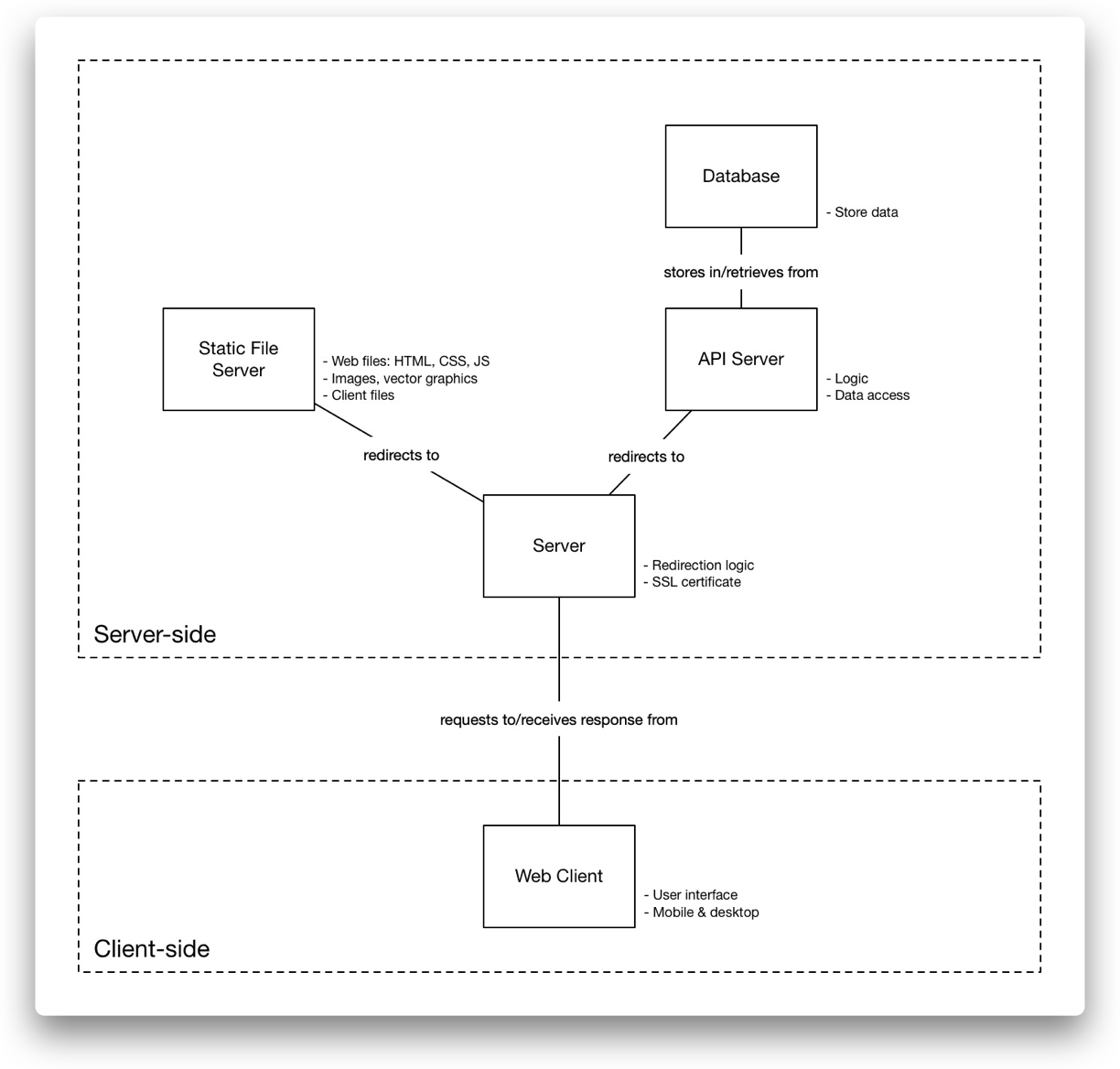
Overall system architecture
Following research on the deployment infrastructure, the system architecture was adapted. The development time and efforts, as well as the operating costs were the main factors considered when choosing Google Cloud as the infrastructure provider for this simple project.
During API server implementation, I explored in more depth the topics of API design and dependency injection. I defined my API routes and worked on a documentation using the Swagger API online tool. I further defined the modules within the API server and used as few external libraries as possible. I wanted to keep code simple and elegant, to learn with practice and dive deeper into concepts of programming. This experience helped me understand various challenges solved by third-party libraries, libraries used in past projects at work.

Learning throughout the journey
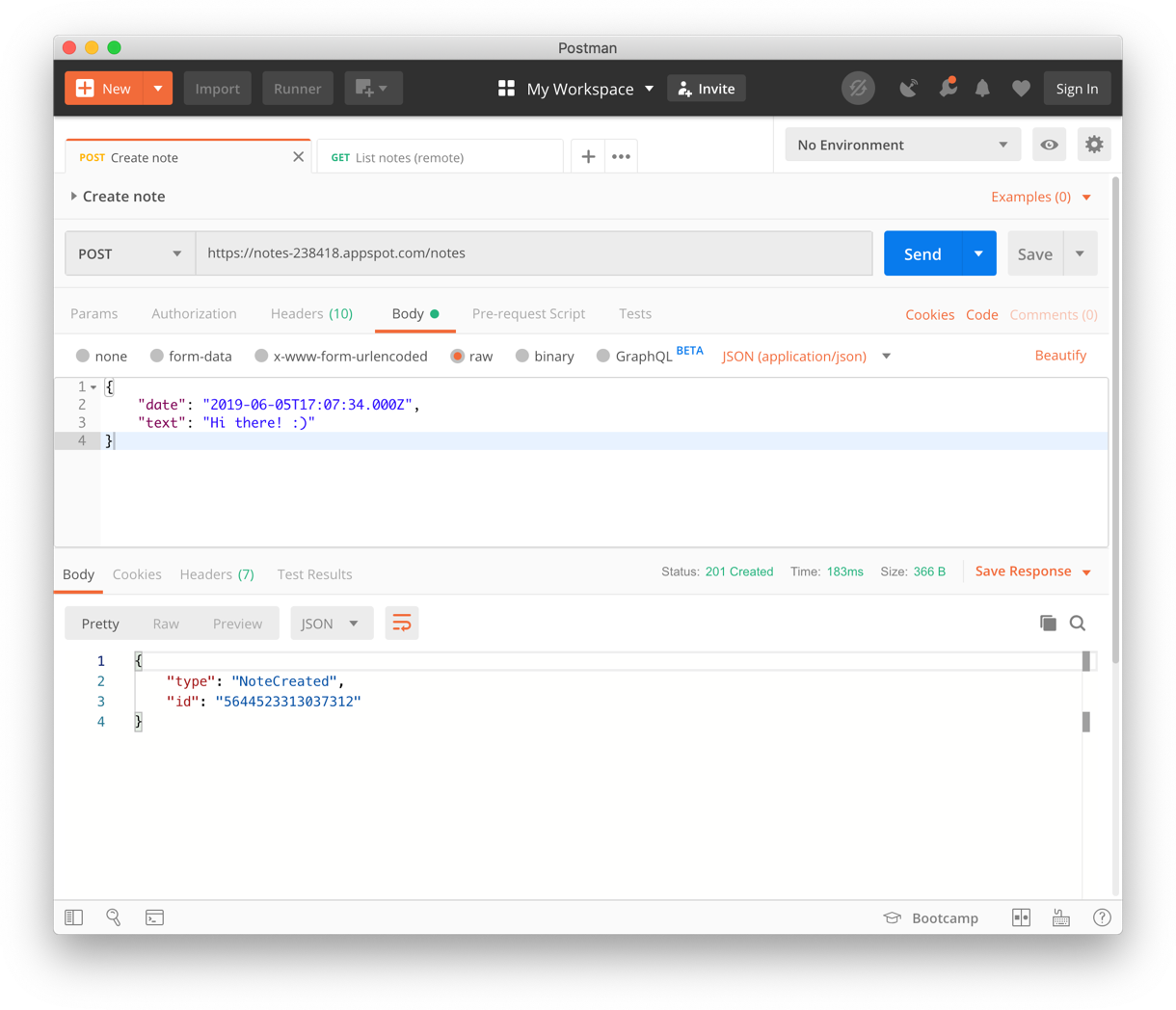
API server implementation
While the features concentrated only on note-taking, the server code foundation took more time than expected to implement. However, the benefit on learning was still considerable, as the objective to grow my skills. I decided to go forward with the approach to build a foundation for the front-end application. I even used a new approach to develop interface components. Each component of the interface were built separately, to review their style under various states, to test their logic in isolation. I brought the design system to life. This development process was quite neat to follow.
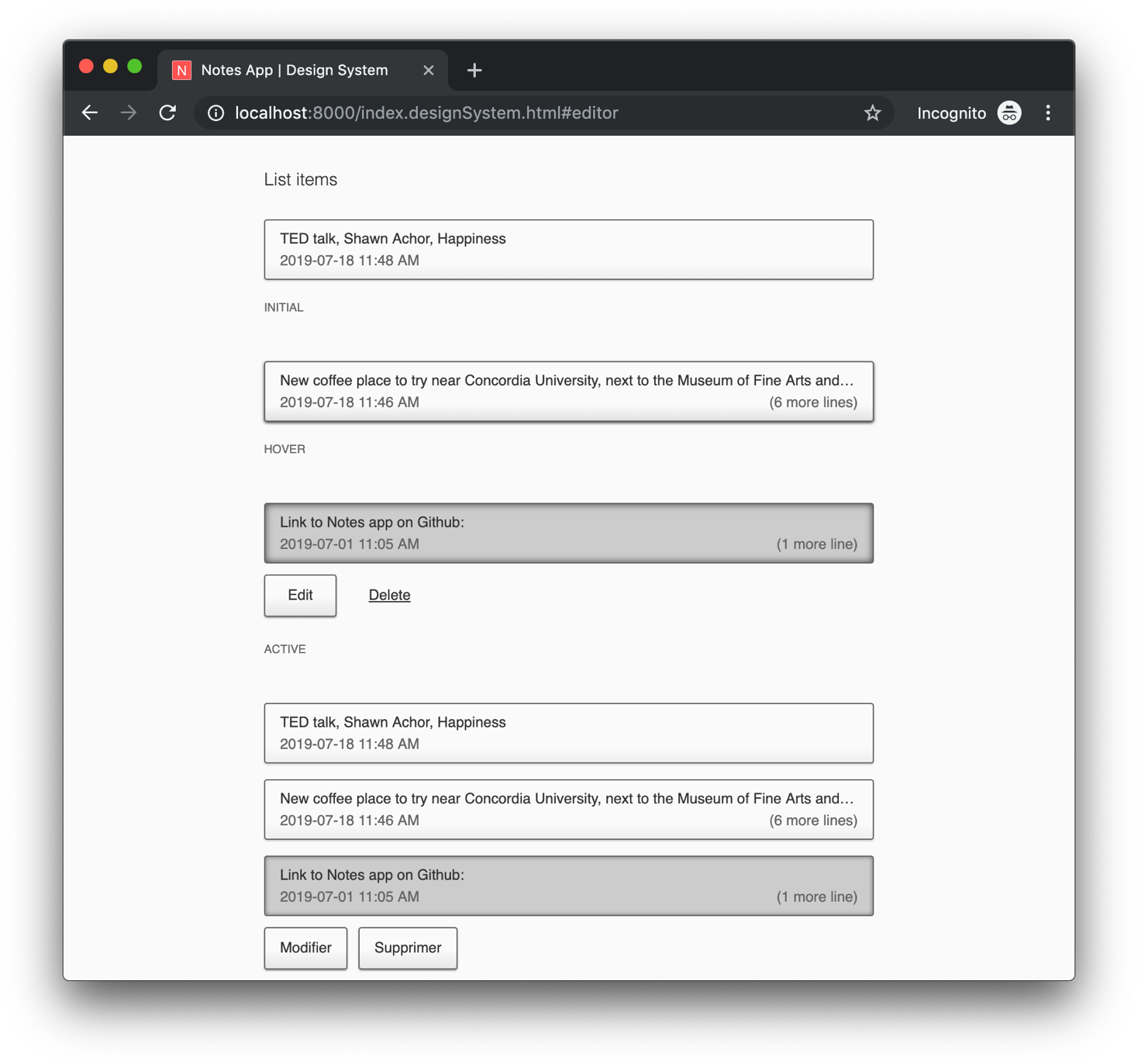
Web client implementation
During development, every week, I had the chance to discuss my progress with friends. This was very motivating. With developers, we discussed testing approaches, architectural decisions, and exchanged tips on estimating work and defining clear goals. With designers, we shared our perspectives on graphic design and the creative process. With many friends, we exchanged on personal growth, as I took a step back to observe my evolution during this project. I enhanced practical skills, built more self-confidence, trained motivation and resilience to stress, learned to establish constraints for creativity, found a new equilibrium with expectations in reality. This personal project highlighted the importance of friends and family in my life, the building of a story with people I belong to, these people in my life.

Friends and family support
It was already my last sprint. Once the design system up and running, I placed each component onto the app’s single page. I adjusted scripts for deployment to account for new files and folders. I tested the integration between the interface and the server. And voilà, version 0.1.3 was released in August.
App is deployed at
http://app.notes-app-238.com/

End of a journey
This project marked my transition between two jobs, A little bit like my connecting flight between Chicago and Montreal, this project offered time to reflect on two aspects of work as a software developer: design and programming. This time is part of this transition between two jobs, in which I explored with my own rhythm and took a step back to realize a small dream. I completed the release of an app I designed.
I achieved small victories throughout its realization, I checked my supporting objectives one-by-one, leaving space for questions and further considerations. I recorded my work, my hours to be able to see how I work. I tackled motivation storms with help and patience, I tackled technical difficulties with perseverance!
This project changed me, and this wasn’t possible without the support of my friends. I will now go back to the workplace with new skills and new perspectives on design and programming. I feel ready to converse with new forces at work and share some of this experience with friends and family.

